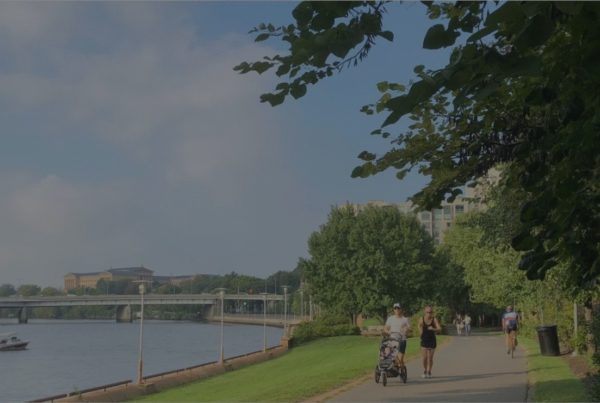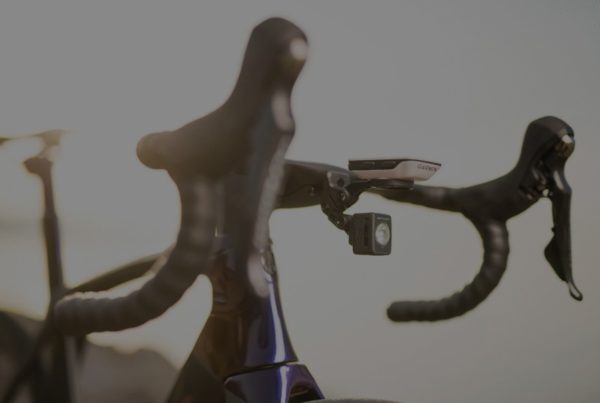When you are harassed by a dangerous driver, you can take action. Here’s how one cyclist did just that.
“How about I get out and f—k you up in front of your kid?”
The road-raging driver had just endangered the life of the cyclist and his toddler, and now he was spoiling for a fight. It began on a calm Sunday morning in New Orleans. Charlie Thomas had gone for a ride with his young daughter Colette, towing her in a Burley trailer, enjoying the ride and time together. But on the edge of the iconic French Quarter, their peaceful Sunday morning was violently interrupted when a speeding car buzzed them, passing within a foot of Charlie and Colette.
It was close, but they hadn’t been hit. When Charlie rolled up next to the driver at a red light a couple of blocks ahead, he saw his opportunity to talk with the man who had just endangered their lives. “Hey man, you passed us really close back there. Think we can get a little more room next time? We have a three-foot passing law in Louisiana.”
I know Charlie. He really is that even-keeled. The driver was lucky; he could have had a more aggressive and confrontational cyclist roll up on him after his buzzing stunt. I know some of them, too.
The driver extended his arm, and then his middle finger.
“I’m not trying to start anything,” Charlie said, “but you passed way too close to my daughter and me.”
And that’s when the driver, motioning that he was about to get out of his car, responded with his tough-guy threat: “How about I get out and f—k you up in front of your kid?” Charlie’s emotions surged, but he knew that any further engagement would be unproductive, and with his daughter there, unsafe. So he broke off the encounter, and the driver sped away.
Like many cyclists who have been harassed, Charlie felt anger, frustration, and powerlessness — and he wasn’t about to let this driver get away with it. As I said, Charlie’s an even-keeled guy, but he’s not just another avid cyclist and devoted dad. He’s also a bike lawyer with a deep commitment to making the roadways safer for all. And now he was determined to bring this dangerous driver to justice.
The first thing he did was record the fleeing driver’s license plate with his phone. With that information, Charlie hired a private investigator to identify the vehicle’s owner. Charlie wanted this belligerent driver to know that there are consequences for disregarding the rules of the road, and he wanted to make him think twice about endangering and threatening someone again.
Once he had the private investigator’s report, Charlie sent the driver a letter asking for his insurance information, as he was planning to file a claim. An attorney-friend of the driver contacted Charlie, explained that there must have been some misunderstanding, and urged Charlie not to pursue the case. Charlie responded that there was no misunderstanding, but if the driver wanted to meet Charlie at his law firm’s office to apologize for his actions, he would drop the case and not pursue civil damages. Charlie asked for the driver to call him and set up a time.
The call never came.
Although the incident didn’t involve a physical impact, Louisiana has both a three-foot passing law and a non-harassment law on the books. Charlie filed suit seeking damages for the driver’s harassment. There had never been a case setting the value of damages for a harassed bicyclist under Louisiana’s law, so Charlie and the driver’s insurance company were in uncharted negotiating territory.
Eventually, Charlie negotiated a settlement that established a value of $4,500 damages in a civil case for cyclist harassment in Louisiana; the proceeds were donated to Bike Easy, the New Orleans-area bike advocacy group. The official case on the books is Thomas v. Arbona, Case No. 16-03127; First City Court for the City of New Orleans. Now, any other cyclist who sues a driver for harassment in Louisiana can use the value for damages established in this case.
In this case, the hostile driver was brought to justice and the calmer demeanor prevailed. Rather than getting into a fight with a raging stranger on the side of the road, or fretting in frustration about the dangerous driver escaping without consequence, Charlie defused the situation and used the legal protections already in place to deter future bad behavior.
And you can too — at least in states with anti-harassment laws on the books. If your state doesn’t have an anti-harassment law on the books, work with your bicycle advocacy organization to get one passed. And look for other laws on the books, and other avenues to bring the driver to justice.
If you are harassed, first, take a photo of the miscreant’s license plate with your cell phone; then call the police. As soon as possible, type out what happened, quotes and all, while your memory is still fresh. Then file a report with your local law enforcement agency. It’s important to create a paper trail identifying aggressive drivers; that’s how the infamous Dr. Christopher Thompson was finally brought to justice, after claiming that the serious injuries he deliberately inflicted on a cyclist were just “an unfortunate accident.”
You don’t have to take an aggressive driver’s blatantly illegal assault, and you don’t have to go-toe to-toe with violence either. If you want to bring a driver to justice, and you’re not sure where to start, contact a bicycling attorney-advocate to see whether your state has a non-harassment law and what your options may be.
This article, Brought to Justice, was originally published on VeloNews on May 8, 2017.
Now read the fine print:
Bob Mionske is a former competitive cyclist who represented the U.S. at the 1988 Olympic Games (where he finished fourth in the road race), the 1992 Olympics, as well as winning the 1990 national championship road race.
After retiring from racing in 1993, he coached the Saturn Professional Cycling team for one year before heading off to law school. Mionske’s practice is now split between personal-injury work, representing professional athletes as an agent and other legal issues facing endurance athletes (traffic violations, contract, criminal charges, intellectual property, etc.).
Mionske is also the author of “Bicycling and the Law,” designed to be the primary resource for cyclists to consult when faced with a legal question. It provides readers with the knowledge to avoid many legal problems in the first place, and informs them of their rights, their responsibilities, and what steps they can take if they do encounter a legal problem. If you have a cycling-related legal question please send it to Bob, and he will answer as many of these questions privately as he can. He will also select a few questions to answer in this column. General bicycle-accident advice can be found at bicyclelaw.com.
Important notice:
The information provided in the “Legally Speaking” column is not legal advice. The information provided on this public website is provided solely for the general interest of the visitors to this website. The information contained in the column applies to general principles of American jurisprudence and may not reflect current legal developments or statutory changes in the various jurisdictions and therefore should not be relied upon or interpreted as legal advice. Understand that reading the information contained in this column does not mean you have established an attorney-client relationship with attorney Bob Mionske. Readers of this column should not act upon any information contained in the website without first seeking the advice of legal counsel.
© Bob Mionske 2017. All Rights Reserved.




